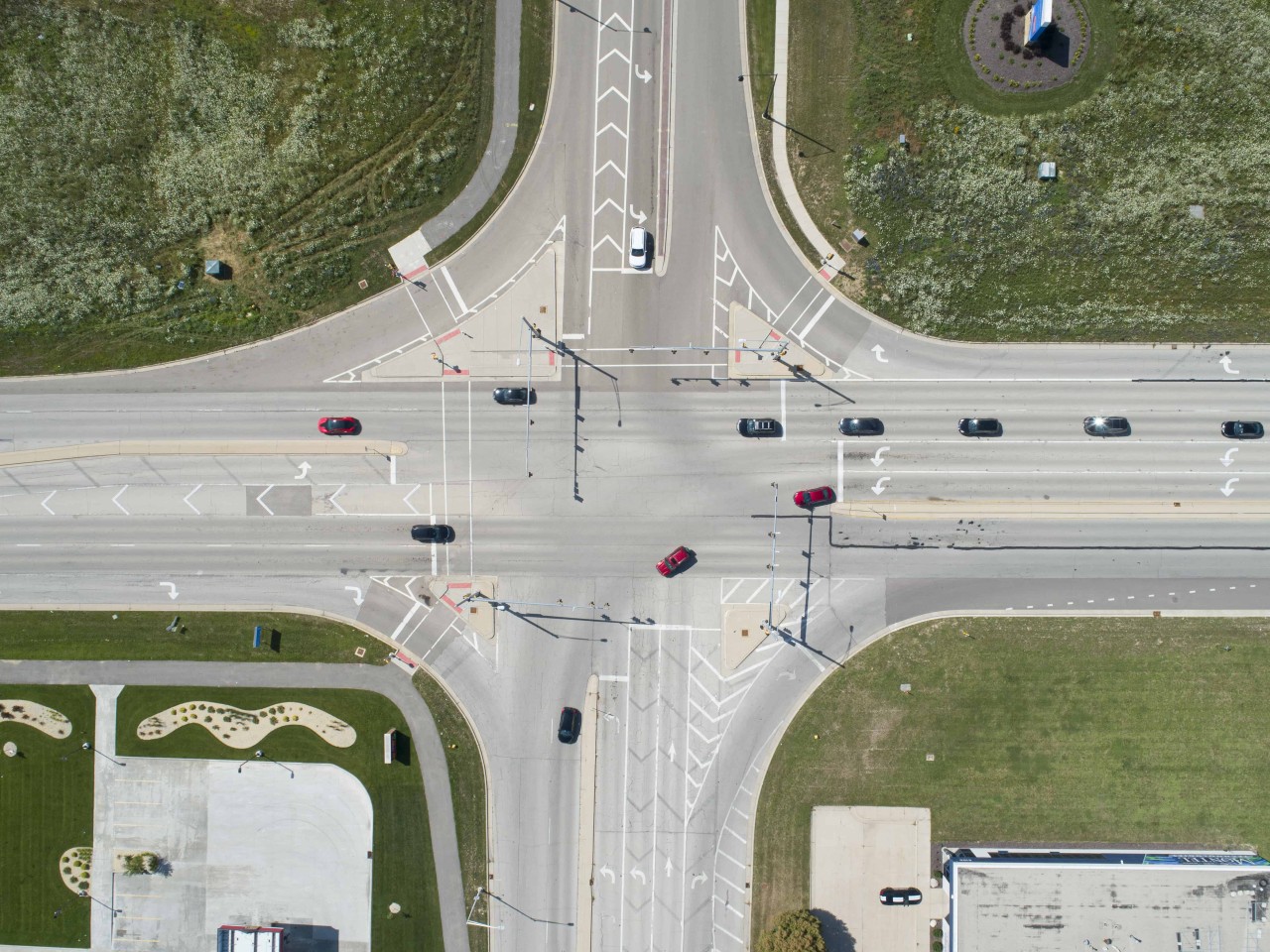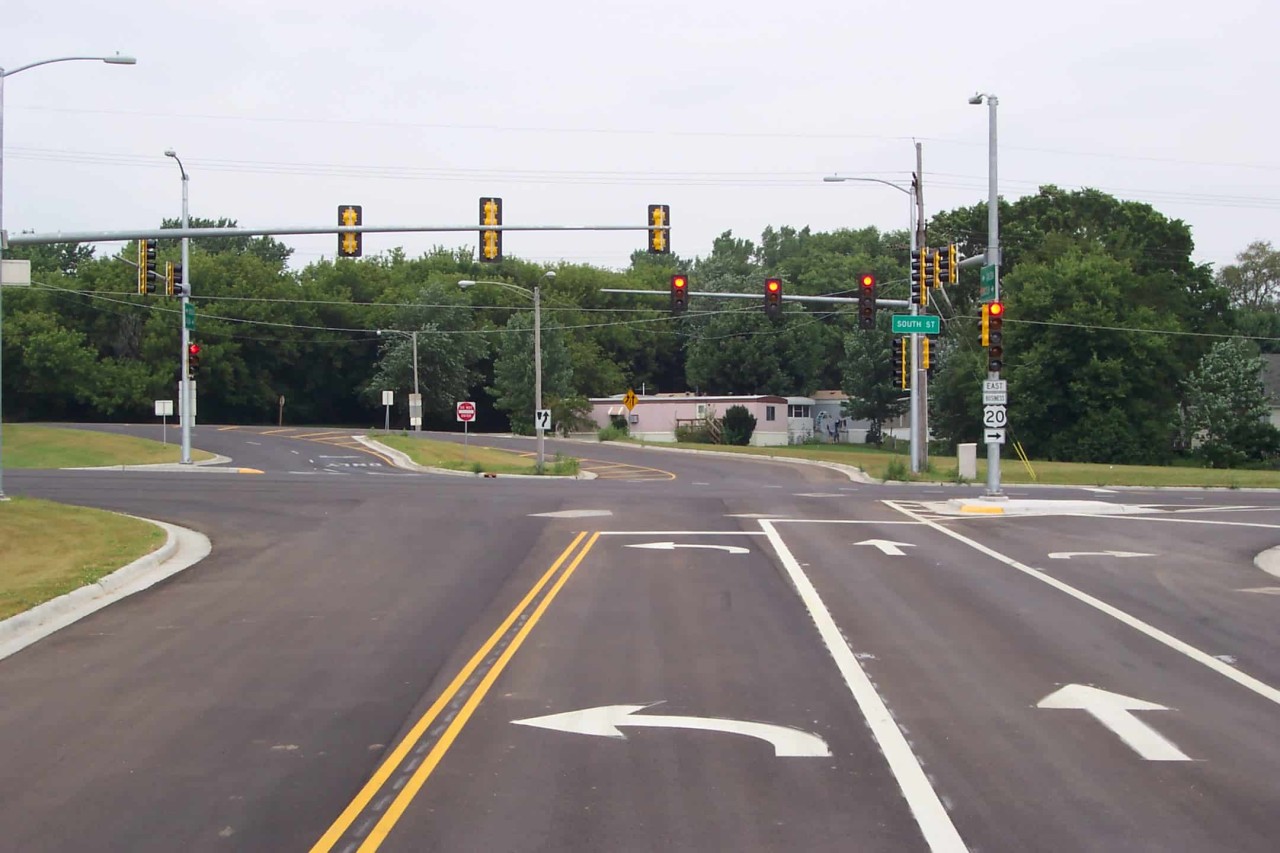Transportation forecasting: preparing for growth
- What will traffic conditions in your community look like in the coming years?
- Are you worried an ever-increasing traffic flow will jeopardize the safety of your neighborhood streets?
- How do you ensure an accurate projection of traffic data to improve the quality and safety of traffic operations in your community?
Transportation forecasting attempts to estimate roadway traffic volumes in and around your community. Whether it is projecting the number of vehicles on roads and bridges, the number of commuters on rail lines or the number of vessels calling at ports, transportation forecasting is the key to planning, designing and improving future traffic operations.
An average timeline of 20 years is considered, along with a wide array of traffic, demographic and economic data to help estimate the future traffic in an area. With accurate transportation forecasting, you can better evaluate the efficiency of transportation facilities and land use plans in your neighborhood and determine the need for road construction or additional transportation services.
Key aspects of transportation forecasting
Developing a travel demand model is at the core of transportation forecasting. Several factors influence traffic demand in an area, including:
- Location and intensity of land use. Areas with office buildings and shopping centers generate different traffic flows than those with residential complexes.
- Socioeconomic status of residents. Lifestyles of residents affect their choices for transportation. For example, a residential area with high-income workers will generate more trips by automobile per person than an area populated by retirees.
- Available transportation facilities. The travel time, money, convenience, comfort and safety of transportation facilities significantly affect the travel demand.
Statistical tools have been developed to generate travel/transport demand models using correlation and regression analysis, the most common being a sequential one. The following is a typical, four-step process to generate a sequential travel demand model.
|
Four-step process to generate a sequential travel demand model |
||||
|
Trip generation |
Trip distribution |
Mode choice |
Trip/traffic route assignment |
|
|
Determining the frequency of origin and destination of trips based on household demographics and land uses. |
Pairing trip origins with destinations to analyze cross-volume travel between transport zones. |
Calculating the proportion of trips between each origin and destination using different transportation modes. |
Allocating trips between an origin and destination by a particular mode through different travel routes, assuming the shortest travel time is preferred. |
|
The scale of projecting traffic demands is a critical aspect of transportation engineering. A project scope determines the necessity and scale of a traffic demand forecast. Transportation forecasts can be:
- Planning-level forecasts. These are developed at traffic count sites using future average annual daily traffic (AADT) volumes generated through traffic analysis tools. The socioeconomic characteristics of an area influence the projected AADT volumes. Available data from project-level forecasts are also used to determine planning-level forecasts.
- Project-level forecasts. These require a more detailed analysis of future traffic volumes, such as noise analysis, traffic speed, accident data, different types of traffic, pavement structure, traffic operations and more. Project level forecasts are used to study complex mainline and/or turning movement traffic.
Some other key elements of transportation forecasting include:
- Geometric design values. These are calculated for roadway designs, such as designing an intersection using data from continuous traffic count sites. The design guidelines are based on the data gathered from planning level or project level forecasts, signal timing, guidelines from the federal highway administration and State Department of Transportation (DOT). Geometric design values, including horizontal curve radius, access density, signal density, on-street parking, vehicular traffic volume and pedestrian and bicycle activity, may directly affect the speed of projected traffic operations.
- Vehicle classification data. This describes the mix of passenger cars and single-unit vehicles, including trucks, buses, semitrailers, recreational vehicles and motor homes on roadways and is required for developing planning-level forecasts. The data is collected based on the vehicle length or number of axles. Vehicle classification data can also be helpful for pavement design or work zone planning, where the number of large vehicles or trucks is an important consideration.
- Technology evolution. Developments in automobile technology, including the evolution of autonomous cars and electric vehicles (EVs), are emerging as critical factors influencing future trends in traffic demands.
With more people in urban and rural areas, precise traffic demand prediction is necessary for efficient vehicle movement, reduced congestion and to develop optimal routes. Partnering with a team of experts can help you project the traffic volumes in your area accurately.
Partner with transportation engineers for accurate transportation forecasting
The technical aspects and the associated costs of transportation forecasting usually deter community leaders from evaluating future traffic volumes. At Fehr Graham, our experienced team of transportation engineers and qualified professionals help municipal leaders with transportation engineering and planning while securing federal and state grants to finance projects. In states such as Illinois, we have helped communities secure grants worth more than $200 million to strengthen transportation systems under the Illinois Transportation Enhancement Program. From preparing Traffic Impact Studies to identifying the need for developing road, rail or bridge designs, overseeing construction to securing funding assistance, we ensure successful outcomes for your transportation engineering projects.
To learn more about how Fehr Graham can help with transportation forecasting for your community, contact us or call 815.562.9087.
 |
As the firm’s Lead Transportation Engineer, Fehr Graham Principal Noah Carmichael, PE, leads notable, complex and high-profile transportation infrastructure engineering projects. He works closely with municipal and governmental partners on public infrastructure planning and identifies funding opportunities to support community capital investment goals. Reach him at |
Collaborative, Insightful, Results-Driven Solutions
Fehr Graham provides innovative engineering and environmental solutions to help improve the lives and communities of our customers.


